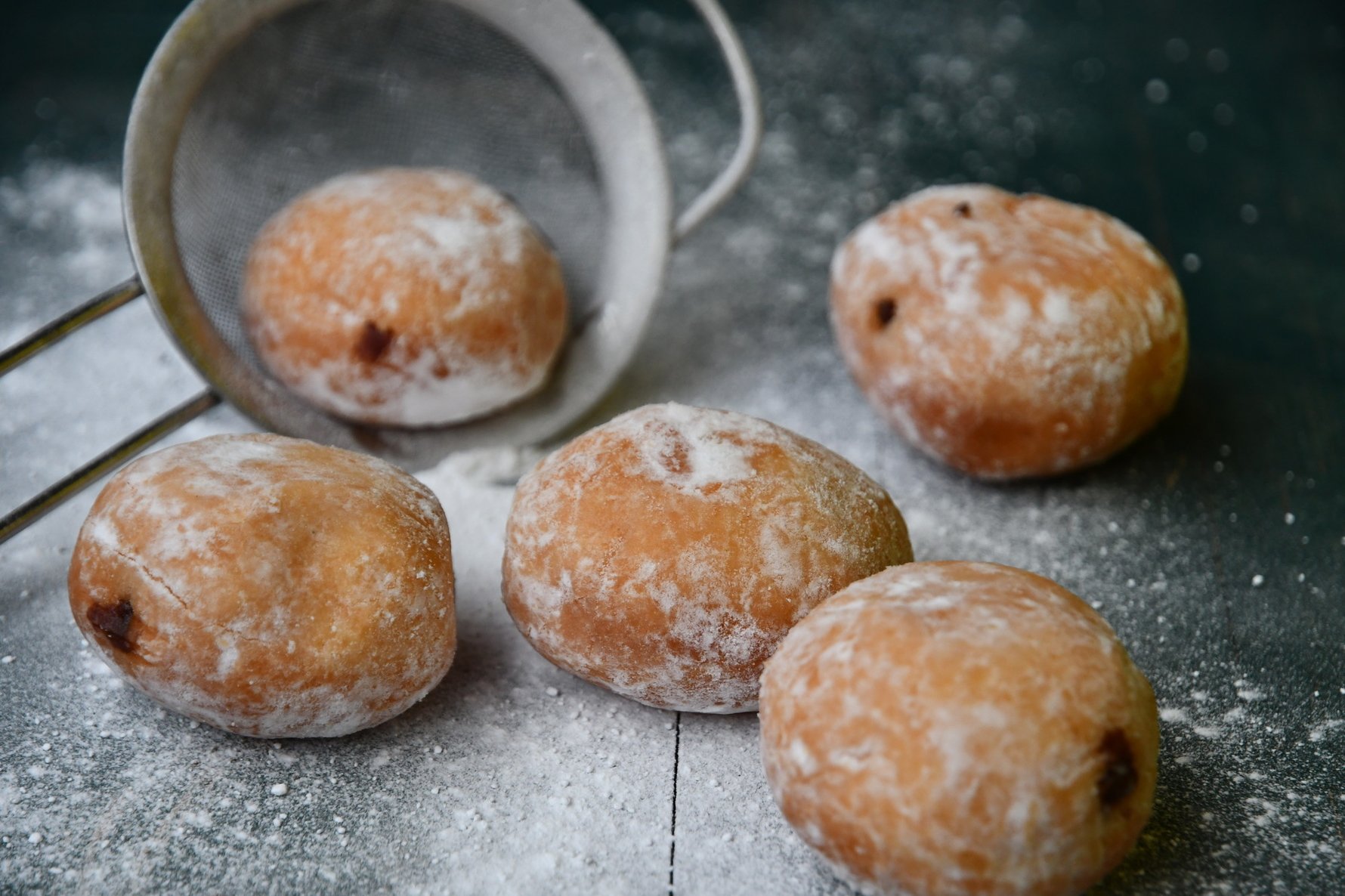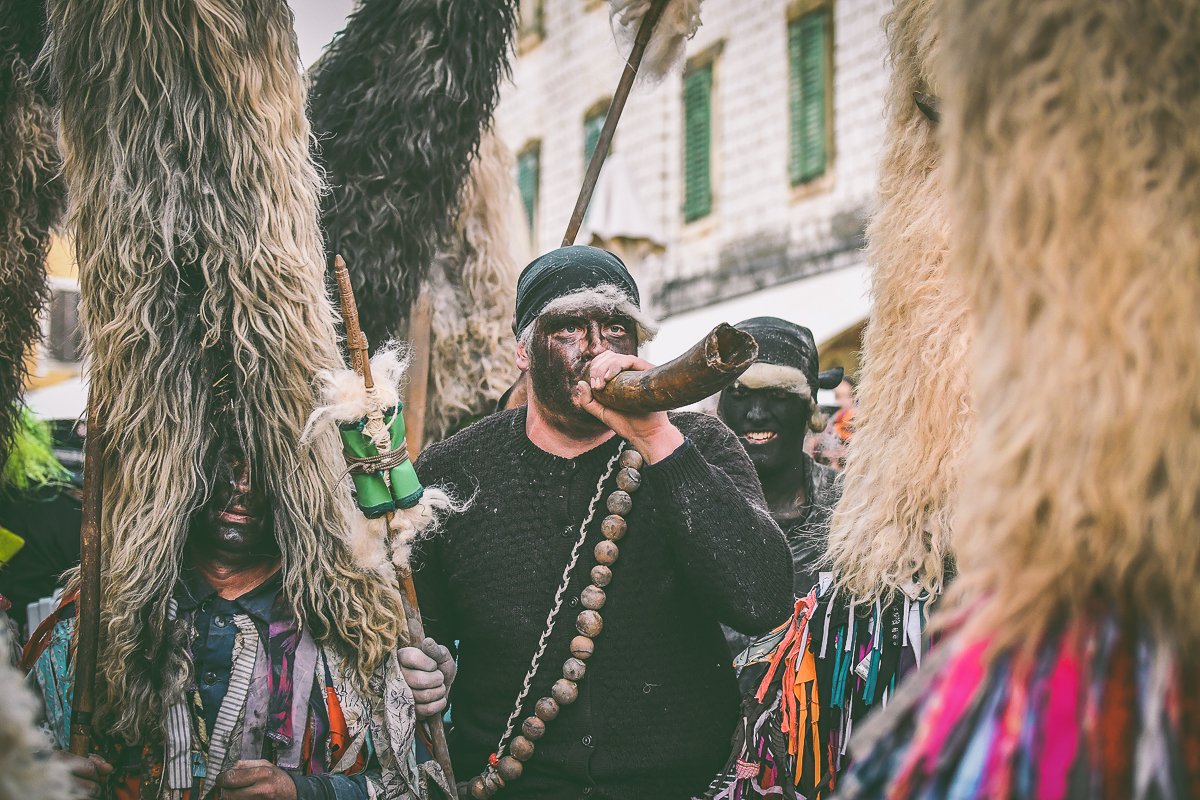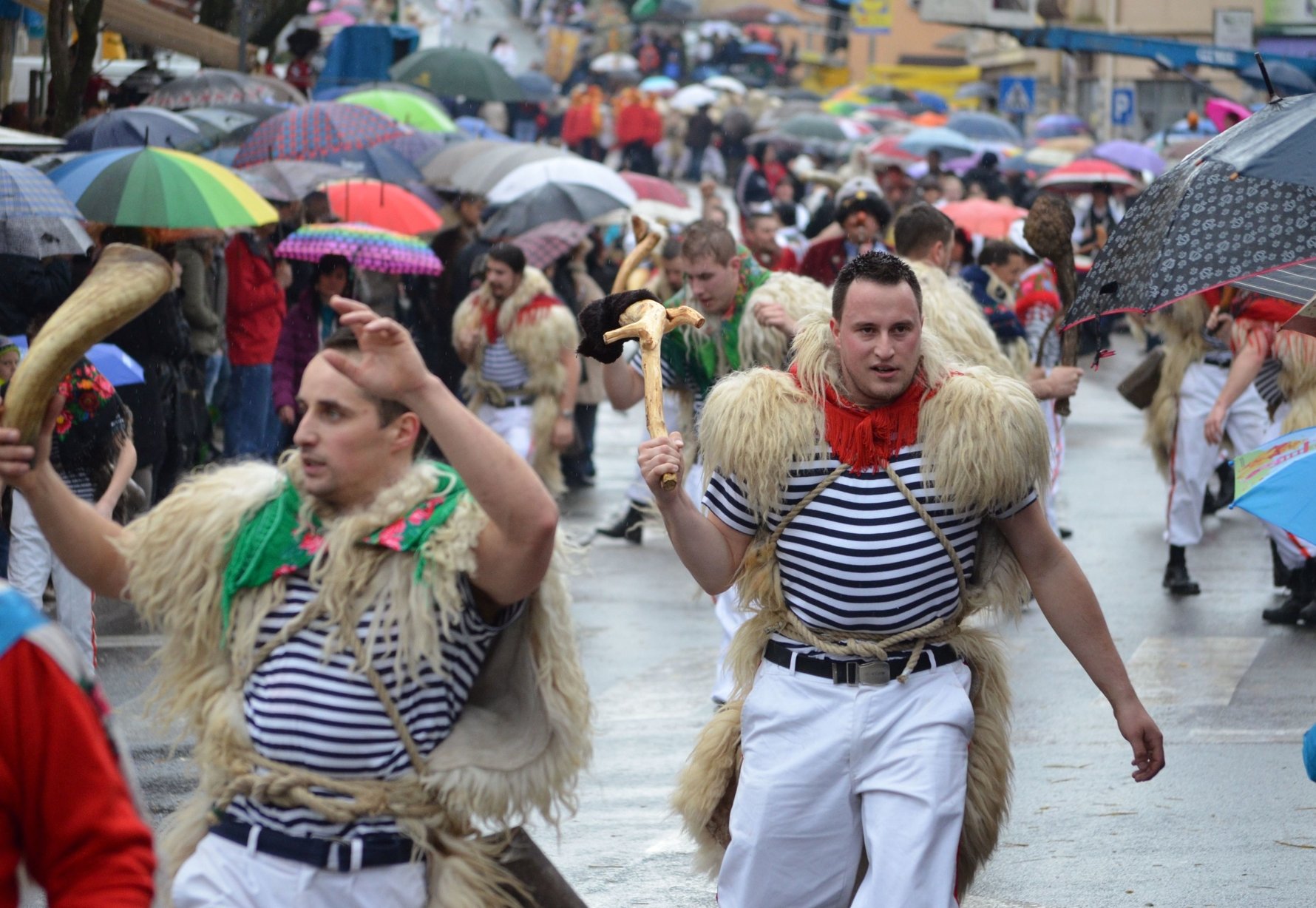The flair, the glare, the excitement and the dazzling costumes are just some of the elements we consider to be a part of any carnival.
Well, behold, and be prepared dear readers, as your traditional carnival in Croatia includes not only these glittering essentials but also something different, something spooky, something quite hair-raising, in fact. You may be scared right now but let us tell you that this is a great time to be in Croatia, as you can join the locals in scattering evil ghosts and releasing a year's worth of frustrations all under the cover of fancy dress. This is, indeed, taken to be the norm, a ritual intended to cleanse your soul before the warm season of spring arrives.
You see, the Croatian carnival season is connected with ancient, local traditions that go back to the Middle Ages. According to Slavic pagan customs, carnivals would begin closer to the beginning of the year when locals would parade the streets, marching and cheering. They’d attend masquerades, fancy dress balls, wear costumes and sing to drive away evil spirits. This would continue until Shrove Tuesday, the day before Lent - the time of fasting, a time of moving away from our wrong doings and preparing for Easter.
Quite often the final day of celebrations would finish with the ceremonial judgment of an imaginary character blamed for everything bad that had happened over the past year. In the Zagreb region this individual is styled on a prince and is named the fašnik, though his moniker is different in other parts of the country. But wherever you go, he is the one who represents all our problems, troubles and miseries, who takes the blame and is then symbolically burned in a blazing bonfire. A little harsh, you say? Not in the least! Nowadays, carnivals around the country intertwine the customs of old with the fun and glamour of the present day. Everyone is welcome as the carnivals include all generations, with some wholehearted devotees preparing for the show all year round.
Every region has its own customs, so let’s get an insight into what’s happening and where...
AROUND ZAGREB
Samobor Carnival
The idyllic town of Samobor is just a few kilometers away from Zagreb and has one of Croatia's most popular and longest-running carnivals, originating in 1827. Strong political mockery is what labels all the carnival events in Samobor and that's how it differs from the other carnival events in Croatia. The caricatures and puppets in the central square and side streets mock the current political situation in the country as well as well-known political figures and events that marked the previous year. Each shop, café and office seems to have a parody of its own displayed at the front for everyone to see and laugh at. Local doughnuts (krafne) stuffed with homemade apricot jam are sold on every corner and are counted among the best in the country.

On the first day of the carnival, Samobor's mayor, traditionally abdicates and the key to the town is handed over to the Prince Fašnik (Prince Carnival), a famous carnival figure who impersonates all the misfortunes of the previous year Prince Fašnik and his bunch – Sraka (Magpie), Fiškal (small-town lawyer) and Sudec (Judge) then take control of the whole town to the extreme satisfaction of the numerous visitors. Sraka is the central figure of the show and constantly mocks the crowd and the participants. On the last day of the ceremonies, Prince Fašnik is traditionally sentenced to death and the puppet representing the Prince is set ablaze signalling carnival's successful conclusion. The key to the town is returned to its original owner, the Mayor, and after two weeks of great fun and high spirits, people go back to their everyday business.
IN AND AROUND RIJEKA
Rijeka Carnival
The Rijeka Carnival is by far the biggest and most popular carnival of all in Croatia! The sea-side city has a chill in the air at this time of year, but the carnival traditions that date back to the Middle Ages certainly hot things up. The Rijeka Carnival has become an international event with over ten thousand participants and more than a hundred floats and carts from dozens of different countries. visitrijeka.hr/rijecki-karneval/

Bellringers
Zvončari (bellmen) is a characteristic folk carnival custom in the Rijeka and Kvarner region which was added to UNESCO's Heritage List in 2009. The custom dates to Slavic pagan antiquity when the primary task of Zvončari was to scare away the evil spirits of winter and to stir up the new spring-time cycle. During the Rijeka Carnival, Zvončari march from village to village throughout the region, following the same centuries-old route, making an extraordinary amount of noise, fuelled in part by the wine provided by the locals en route.

FURTHER DOWN SOUTH
Carnival traditions in Senj
Not too distant from Rijeka is Senj, a little town huddled on the coast under the Velebit Mountains, on the way to Zadar. It's famous for pirates, strong winds and fiery people. History has it that masked balls were held in the town as far back as 1658 which must explain why their carnival is so wild and such great fun. visitsenj.com
Poklad of Lastovo island
Further south and off the Dalmatian mainland is the island of Lastovo with the oldest carnival tradition in Croatia and one of the oldest in Europe. The legend says that, when the Moors were besieging the town of Korčula in the Middle Ages, they sent a messenger to Lastovo with the request that the inhabitants surrender. Lastovians captured the messenger and put him in prison which prompted the angry Moors to send their ships to Lastovo to conquer it. A sudden storm blew away the enemy ships and Lastovo was saved. After that, Lastovians put the captured messenger on a donkey and paraded him around the village to mock him. Towards the evening, they extended a long rope from the top of hill (nowadays called the Carnival Hill) and the bottom of the village and lowered him on that rope.
Lastovo carnival is performed in accordance with very strict rules and procedures. Since it is so peculiar and unique, the Croatian Ministry of Culture in 2008 added the Carnival to the List of the Intangible Cultural Goods, where it has been ever since. tz-lastovo.hr/
HEADING EAST?
Đakovački bušari
The biggest Carnival event in eastern Croatia is called the Đakovački bušari. As the name suggests, it is held in the town of Đakovo, most famous for its magnificent red brick cathedral and for its folklore festival. This event was first held in 1994 after a long gap – it renews traditional festivities which were abandoned for many years. It attracts groups from all over the country and from neighbouring Hungary, hoping to steal the show with their themed costumes. www.facebook.com/djakovacki.busari/

In 2025, Shrove Tuesday (Fat Tuesday) falls on Tuesday, March 4th, while carnivals (masquerades, pre-Lenten festivities) start 10 to 40 days earlier. After Shrove Tuesday, the season of Lent begins.
Rijeka: Riječki karneval 17.1. – 5.3. (International Carnival Parade – city center - 2.3.)
Crikvenica: Maškare Crikvenica 11.1. – 5.3.
Biograd na Moru: Karnevalska regatta Biograd 28.2. - 3.3.
Dubrovnik: Dubrovački karnevo 28.2. – 4.3.
Samobor: Samoborski Fašnik 21.2. – 4.3.
Velika Gorica: Turopoljski Fašnik – 21.2.
Đakovo: Đakovački bušari 22.2 and 23.2.





Comments